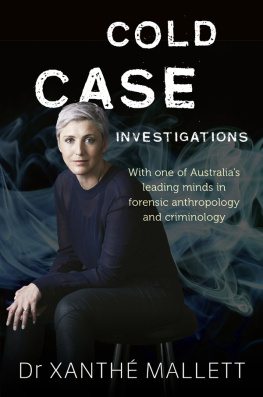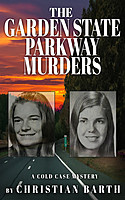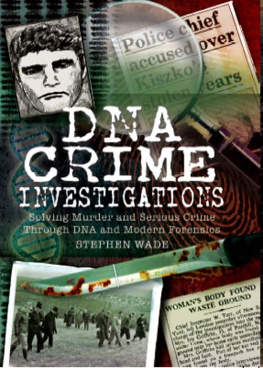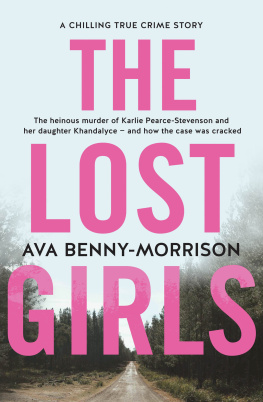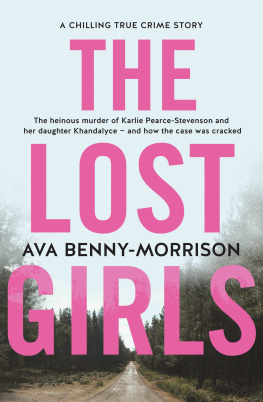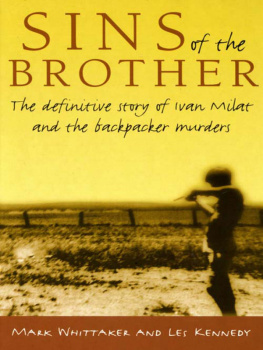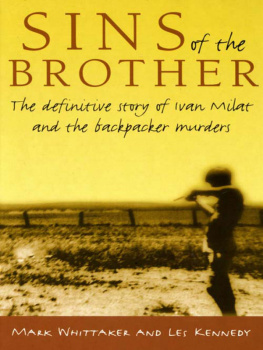About Cold Case Investigations
From the disappearance of the Beaumont children to the abduction of William Tyrrell to the double murder of Karlie Pearce-Stevenson and her daughter Khandalyce, Xanth is determined to expose the truth to maximise dignity for both deceased victims and those left behind.
Xanth talks to experts to uncover the hows and whys of tragic murders and haunting disappearances. Along the way readers will also be introduced to new forensic techniques and scientific methods that could - or did - help move the case forward.
Cold Case Investigations covers mostly murders or suspected murders such as Ashley Coulston, Mr Cruel and Ivan Milat with the victims as the focus. Not only because, criminologically speaking, the more you can learn about your victim the more you can extrapolate about the person who killed or abducted them, but also because they deserve their stories to be told. They deserve for people to know their names. They shouldnt just be someones victim.

CONTENTS
For Mum
OUR OBSESSION WITH COLD CASES
The one question I want you to answer for me is a simple one why?
Bruce Pearce, father and grandfather of murder victims Karlie Pearce-Stevenson and her daughter Khandalyce Pearce
On any other day the scene would be a picture of normality. A kitchen washing-up in the sink, the sound of a chat show coming from the TV in the lounge, a magazine on the kitchen table left open on a story about the latest diet craze.
Not today. Today a young woman died here.
The bright police lights blind you as you enter the kitchen from the relative darkness of the hall. Investigators havent switched the lights on in here as they are a potential source of evidence fingerprints need to be collected from the switches before they are contaminated. The kitchen is a mess, blood spatter everywhere, a glass smashed on the floor, and what remains of the victims last meal sitting on a plate by the sink. Theres a metallic smell of blood in the air.
There are bare footprints in the blood on the tiled floor, leading down the hall towards the front door. Two sets, one belongs to the female victim who staggered outside before she lost consciousness due to blood loss. The other set is yet to be identified, but from what you can see, they are fairly small, so they either belong to a woman or a small man.
From the pattern, it appears the victim left first, staggering unsteadily on her feet there are bloodied handprints smeared down the wall where she has leaned to steady herself. The other person followed them, walking not running, their footprints overlaying the victims in places. This second person has to be considered the main person of interest in this murder as no one from the house called this in a neighbour did that when they found the victim unconscious in the street just 50 metres from her front door. Footprints are as individual as fingerprints, so if the prints from the scene can be matched to a suspect, this would place them at this scene around the time of death.
Looking around, theres little of value on display. Nothing was taken from the house, so this does not look like a robbery gone wrong.
The female victim has 27 stab wounds, all to her upper torso and neck. Blood loss was massive and death would have been rapid. A number of the victims injuries would have been fatal. In fact the offender stabbed her many more times than was necessary to kill her; overkill. The murder weapon was a kitchen knife taken from a block on the counter. It was dropped in the hallway, suggesting this was a spur of the moment attack and was unplanned, and the weapon of choice opportunistic.
This was personal and spontaneous.
Now its up to you to figure out what happened and why.
Its almost like rewinding a scene in a film you have your conclusion, a still taken when the police arrive, but to unravel what happened you need to step backwards, moment by moment. To understand how the evidence presents the way it does, you need to know who was here and how the players interacted with each other and the environment to create the scene in front of you.
Youre also aware that the family will soon be getting the horrific news that a loved one has died in violent circumstances. Someones world is about to fall apart. And it is your job to help make sure that whoever is responsible for that is brought to justice.
In a case like this one, the first 48 hours are critical. Evidence has to be collected before it is lost or contaminated, the scene has to be meticulously searched and recorded, witnesses have to be identified and interviewed, and any significant persons of interest need to be found before they have a chance to flee. The forensic and contextual evidence collected now may make or break the investigation.
A person of interest has been identified a rival in a love triangle but she vanished after the murder, and has not been seen in the area since. Her footprints may or may not match those left in blood at the scene, but unless she can be located, she cant be ruled in or out as a suspect. And no one is talking. Its a small town, close-knit, remote. No one wants to talk to the police.
The case goes cold.
Now imagine this same crime happened 30 years ago. Youve been tasked with reinvestigating the murder of this young woman. You have the crime scene photographs, reports, witness statements, but where to start re-evaluating that evidence? How can you find a suspect and sufficient evidence to lead to an arrest and conviction so many years later?
Time has been your enemy in so many ways.
But it has also been your friend. Two unidentified blood samples were collected that night one we believe to be from the victims assailant, who left traces of blood on the handle of the knife, presumably because they cut themselves during the attack. Small traces, and 30 years ago not enough to lead to the generation of a profile, but today, with advanced DNA techniques, we may be able to repair the small and degraded sample. It may be possible, decades later, to identify the murderer at last.
The reality of cold case investigation is that its hard. Information provided to investigators is often incomplete, evidence degrades, memories fade, witnesses move on and cant be located or die.
That does not mean the investigators give up though. And neither do the public.
There is something about an enduring mystery that captures peoples attention, and none more so than cold cases. Jack the Ripper is a case in point a serial killer who stalked the streets of London in 1888 and brutally murdered five women, potentially more. Why has this story endured and become so embedded in our social consciousness? There are a number of reasons, I think, the most important being that the murderer remains unidentified. This allows continued speculation as to who it could have been. Then theres the violence with which he killed the women, and the heady links to celebrity or royalty in suspects put forward over the years. Mix in the idea that the murderer had medical knowledge (or at least anatomical understanding, as the offender could as easily have been a butcher as a doctor), as evidenced by the injuries to the bodies, with the fact that the perpetrator hunted in one of the poorest areas of London, Whitechapel, and you can see why the story can still generate headlines today.
Not all cold cases have such fascination for us as Jack the Ripper, but there is always something disquieting about an unsolved murder. And its not only the fact that the murderer goes unpunished. I believe its because as children we learn to fear the bogeyman, the mythical monster that hides in the shadows as we try to sleep. As adults we know the bogeyman is make believe, but we learn that monsters do exist in the real world. Their crimes haunt us and stain our collective consciousness, because if the real monsters like Jack the Ripper are never caught if they are still hiding in the shadows how can we sleep safely in our beds?

